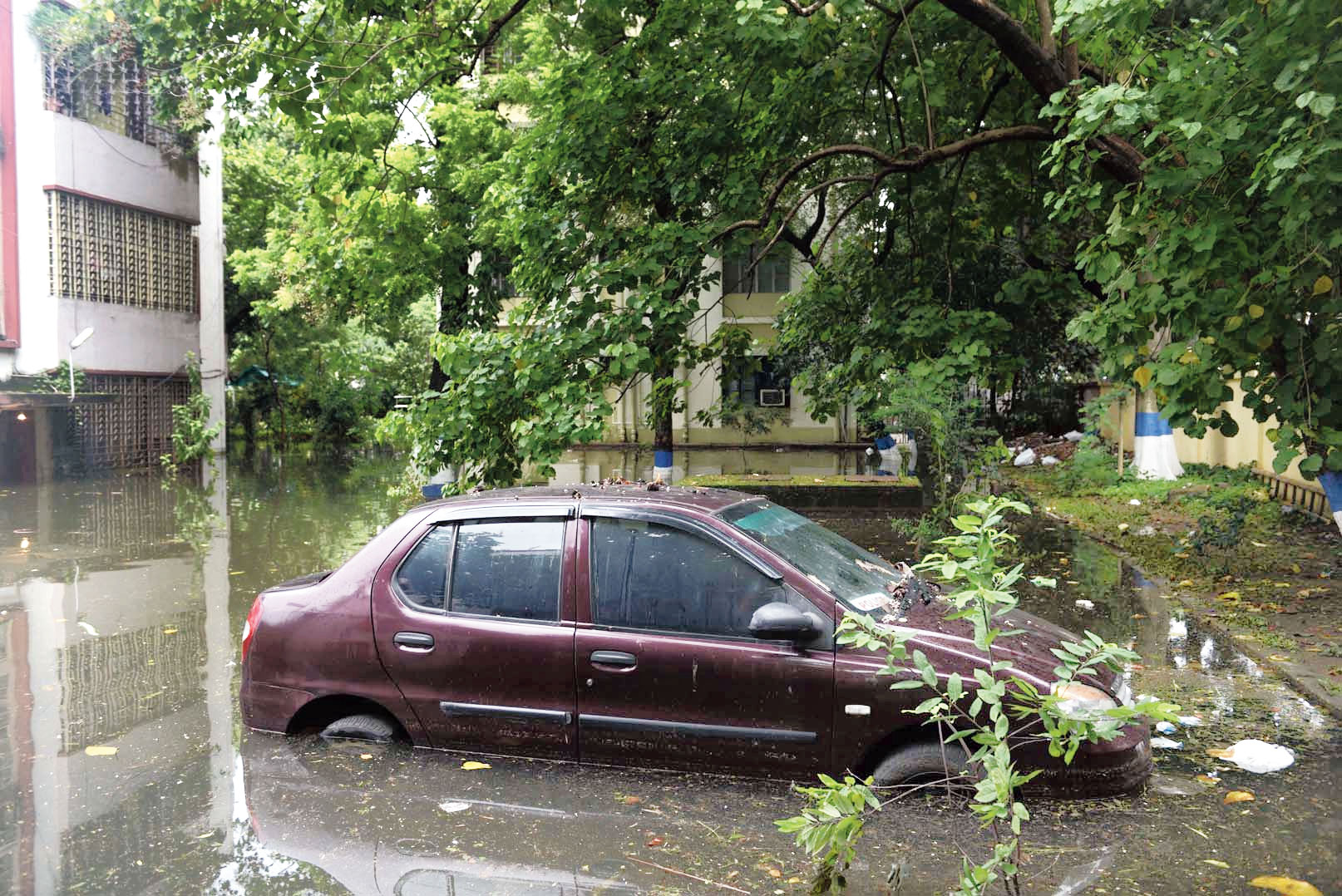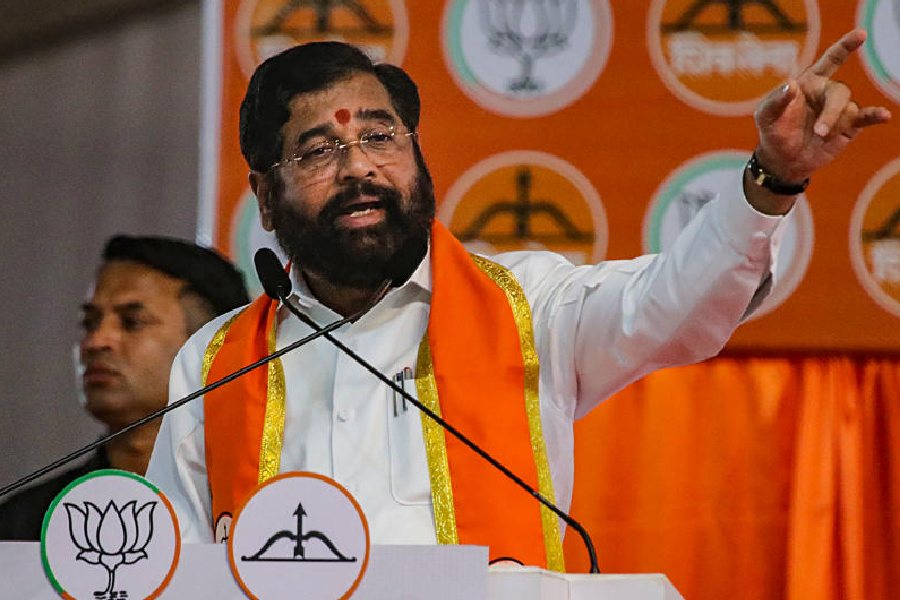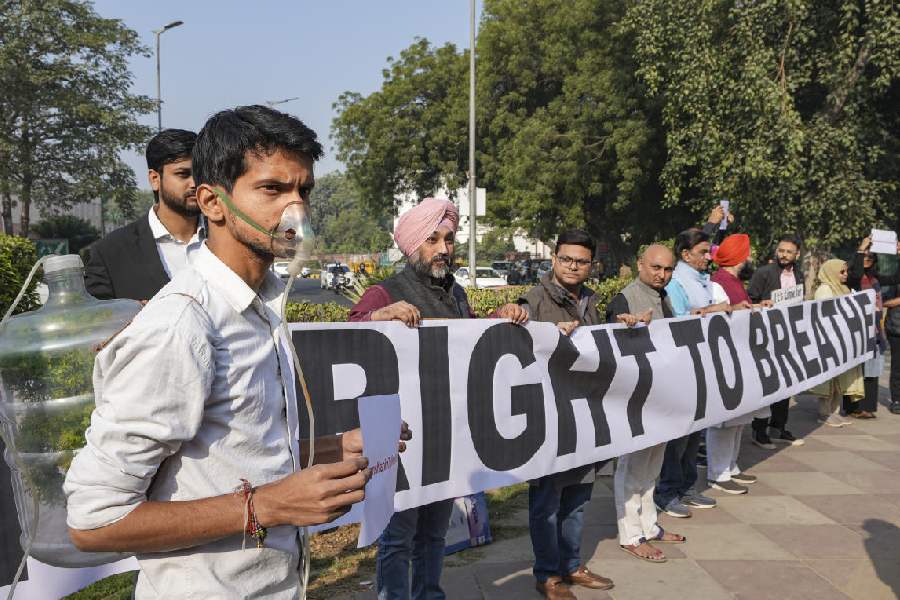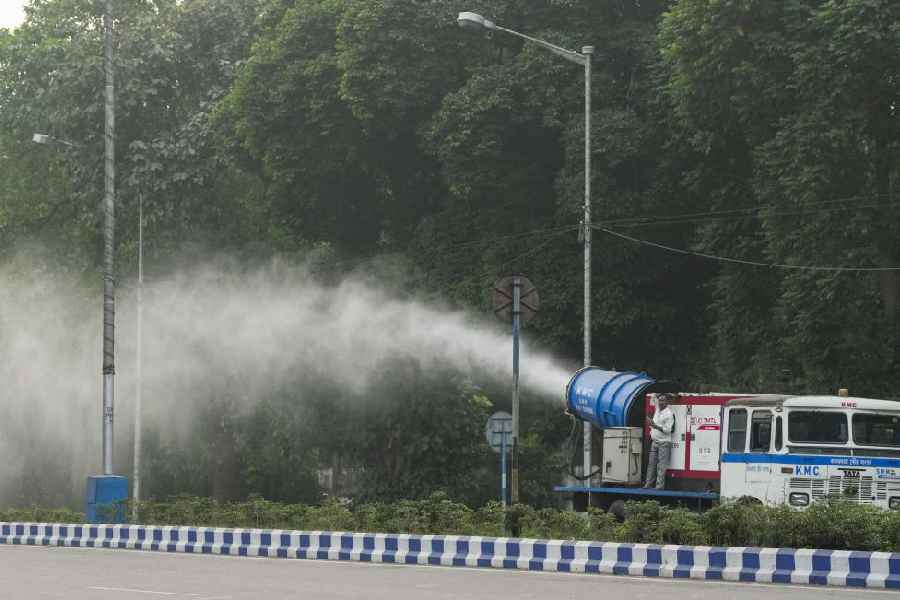Waterlogged expanses, pedestrians wading through knee-deep or waist-high water and vehicles stuttering and sputtering were common sights in the city on Sunday even as the sky started clearing up.
The city had received 88.5mm of rain on Saturday and 7.9mm till 5.30pm on Sunday, according to the Met office records in Alipore.
Metro travelled across the city on Sunday to take stock

A car stands submerged in rainwater at Alipore Bodyguard Lines on Sunday afternoon. Picture by Gautam Bose
Problem areas
Airport-bound cars were caught in traffic snarls near the Haldiram's’ bus stop on VIP Road and at Kaikhali, where the road was under waist-high water.
The entire stretch of VIP road in front of the National Disaster Response Force’s 2nd Battalion was under knee-deep water.
Vishal Jain, a resident of Poddar Vihar on VIP Road, had stepped out with his wife Shruti and five-year-old son Mudit to go to Lake Town. The family had to hire a rickshaw just to cross the road.
“Waterlogging is common here and the residents’ association of our building has complained several times to the authorities but no action has been taken. The road in front of our building turns into a huge water body every monsoon. Rickshaw-pullers make a killing. I had to shell out Rs 20 to one of them to just take us across the road,” Jain said.
In north Calcutta, motorists and pedestrians had a tough time negotiating waterlogged streets in front of Thanthania Kalibari, Sukeas Street and College Street.
A parked car stood submerged up to the headlights at the Alipore Bodyguard Lines opposite BM Birla Heart Research Centre. Most residents of the area could not venture out as there was waist-high water all around. Roads in several parts of Bhowanipore resembled canals.
The situation was similar in Kidderpore’s Karl Marx Sarani and Ram Nath Pal Lane.
Several parts of Behala, including Shakuntala Park and Shilpara, remained underwater for the greater part of the day. The road connecting Behala and Joka was also waterlogged.
“It took us more than 40 minutes to travel from the Behala Chowmatha intersection to IIM Joka. Waterlogging is reported from the same places every year but nobody does anything about it,” said Abhirup Shil, a resident.
Officialspeak
Tarak Singh, the mayoral council member of the Calcutta Municipal Corporation in charge of sewerage and drainage, said torrential rain over a short period of time coupled with siltation of several British-era drains and the high tide had led to waterlogging.
A 12-feet wide and 18-feet deep open drain along Ram Kamal Street in Kidderpore is in desperate need of desilting. “We found only six inches of space left for rainwater to drain out. We used hydraulic excavators and truck-mounted suction units to desilt the drain. Half the job is done and we are waiting to complete the rest. This is one of the main reasons why waterlogging was reported from several wards of Kidderpore,” Singh told Metro.
The heavy rain coincided with high tide in the Hooghly and so the lock gates could not be opened to drain the water.
A survey conducted by the civic body to find out why water accumulates in several stretches of Sukeas Street, Amherst Street and College Street revealed that the brick sewer in the area has an inside diameter of only three feet, of which one foot is taken up by water supply pipelines, leaving only two feet for rainwater to drain out, Singh said. “We will send the findings to IIT Kharapur and seek a solution,” he said.
In Behala, the civic body is operating a drainage pumping station in ward 129 and one more is coming up in Joka.
“The new pumping station had hit a roadblock but it has now been cleared and work will resume before Puja,” Singh said.
The Calcutta Municipal Corporation has built a 4km-long sewer under James Long Sarani to reduce waterlogging. However, this conduit will be functional only when it is connected to the drainage pumping station at Joka.
“Once the Joka pumping station starts working, waterlogging in this area would go down,” Singh said.
The Rs 98-crore project was executed under the Asian Development Bank-funded Kolkata Environment Improvement Project of the civic body. “The sewer line was built using micro-tunnelling technology. Trenches measuring 5X5m were dug at intervals of 250m, causing minimal disruption to traffic,” an engineer of the corporation said. The Rs 98-crore project will benefit residents of 144 wards.











